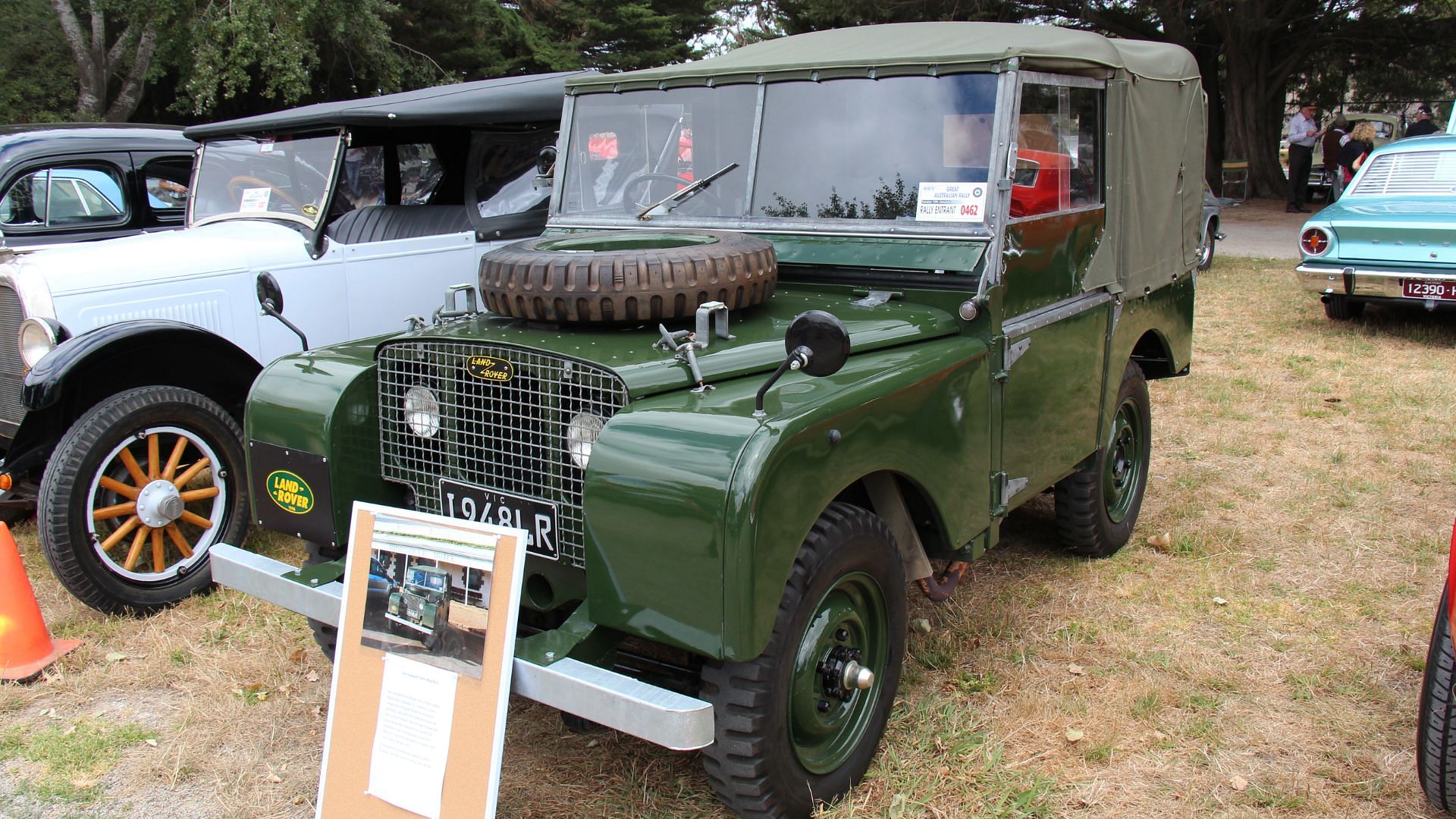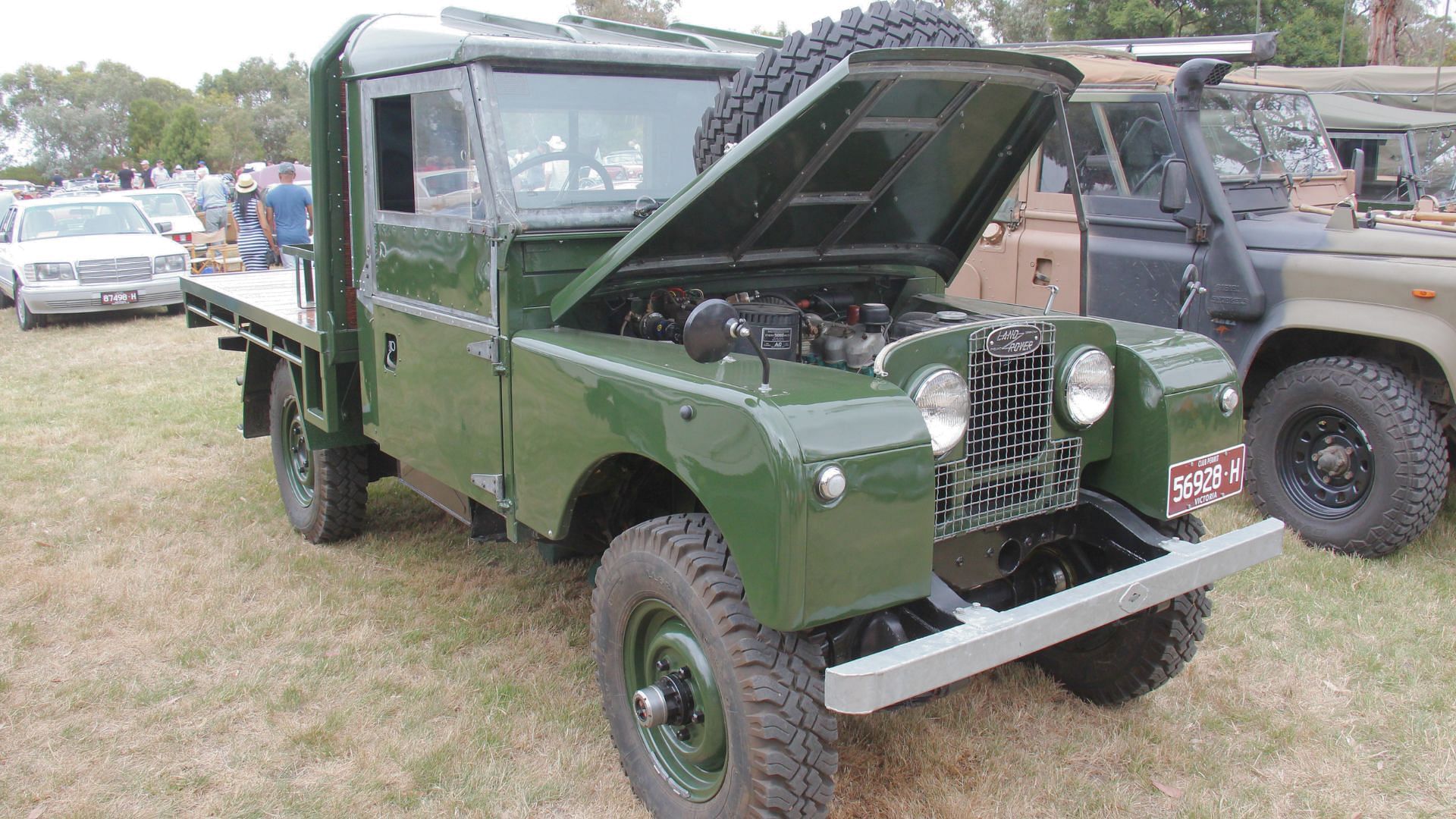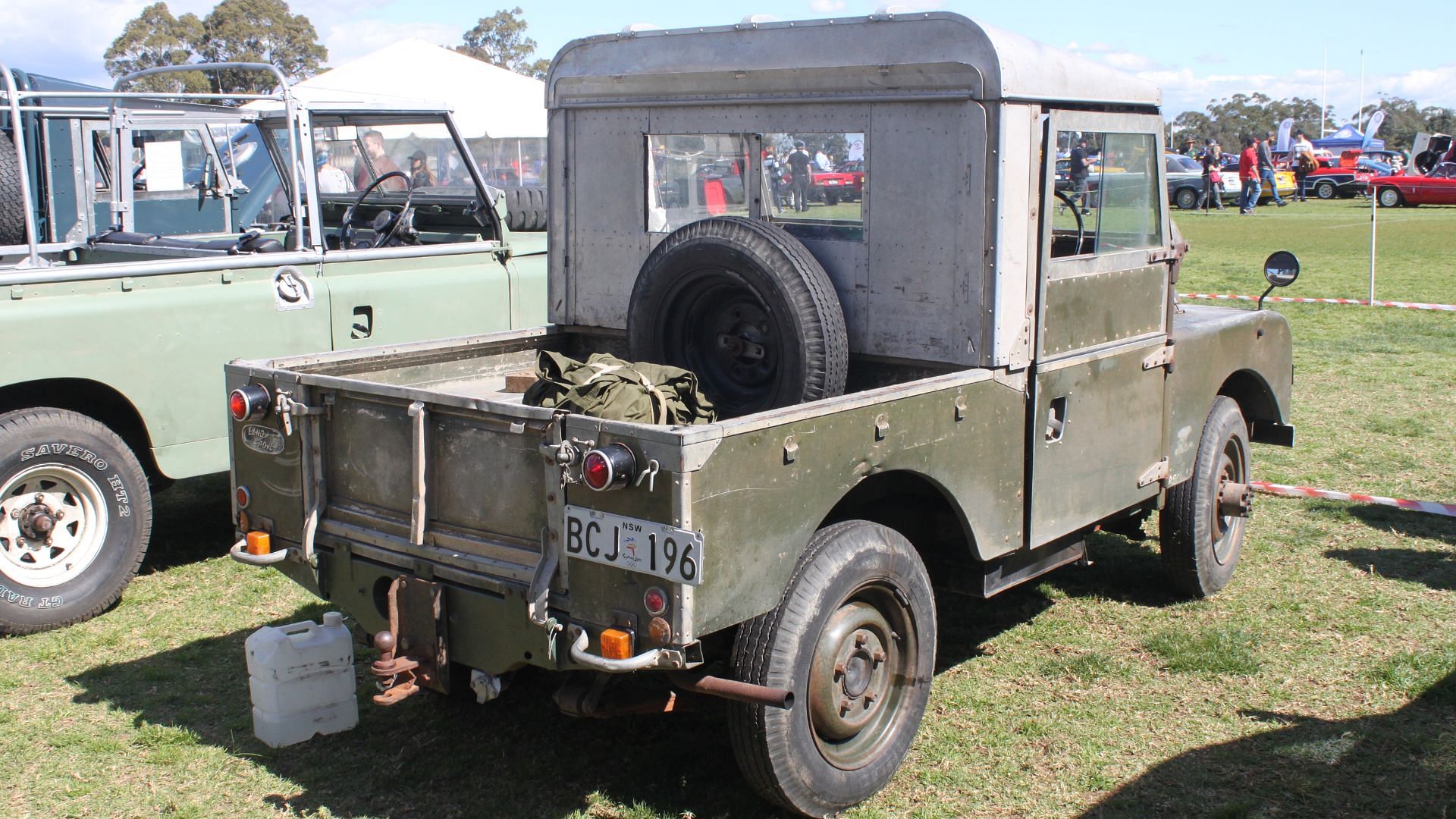1948 Land Rover Series I: The First Production Civilian 4WD SUV with Doors
The 1948 Land Rover Series I was the first Land Rover ever manufactured, and it was famous for its off-road ability and timeless look. The Series I could easily cross difficult terrain thanks to its durable ladder frame chassis, four-wheel drive system, and low-range transfer case. The Series I is now a sought-after antique vehicle, valued for its historical significance, rugged appeal, and iconic style,
Published August 1, 2024

Land Rover Series I Introduction
The 1948 Land Rover is the very first vehicle produced by the Rover Company. It was a compact offroad vehicle inspired by the World War II Jeep. Land Rover immediately distinguished itself in the market, as it was the first mass-produced civilian four-wheel drive and doors in it. It came with a sturdy fully box-welded frame, and due to the steel shortage, it received an aluminum body that was rust-free and improved the longevity of the car.
People loved the fact that Land Rovers were multipurpose tools that could be used for anything. You can use them as your work vehicle, or go off-roading, and due to their capabilities, people often use them for agriculture activities. The beauty of the Land Rover lay in its simplicity, it made this car easier to work on and fix if there was an issue.
How was the Land Rover Series I developed?

In 1948, the Land Rover Series I was created and it became the standard rugged off-road sports utility vehicle. It was introduced at the Amsterdam Motor Show in April 1948 as a short-term measure to keep the Rover Company running post-Second World War. The development of the Land Rover started after World War II, they saw the market for simple and rugged vehicles that people could use every day without fail. Before the war, the Rover company built luxury vehicles but due to the material shortage due to the war, Mike Wilks, the chief designer came up with the idea to create a cheap agricultural and utility vehicle.
Land Rover Series 1 Chassis - Source Land Rover Media
Land Rover Series I had about 50 horsepower from the 1.6-liter four-cylinder engine and offered a 4-speed manual gearbox. In addition to that, its frame is a robust ladder-type box section while it has permanent four-wheel drive, qualities which made it outstanding in off-road conditions hence gaining fame for being reliable and flexible. This vehicle’s minimalist interior was focused on functionality rather than appearance with its direct dashboard to endure harsh climates.
The Series I started out as a small truck and quickly became an iconic symbol of adventure and exploration. Its design values remain central to Land Rover’s identity-shaping models like the Defender among others. Today, people still refer to the 1938 Land Rover as one of the pioneering works.
The first prototype appeared with distinctive attributes as the steering wheel was mounted in the middle, also known as the “center steer.” It was based on a Jeep Chasis and the gearbox was taken from a Rover P3 saloon car. In the testing, the prototype came out to be a capable and versatile machine. Rover company planned only to make this vehicle for 2-3 years to generate cash flow. However, it became so successful, that it became a wholly different brand that continues to deliver cars today.
Land Rover Series I Engines And Performance

There was nothing outrageous about the performance of Series 1, and it was expected as the 1948 Land Rover was not designed for speed but for utilitarian purposes. Over 10 years of its existence, the Series I witnessed a plethora of changes to match the audience it catered to. Originally, the Series I was powered by a 1.6L 4-cylinder engine with a 4-speed manual gearbox. This version also featured a unique four-wheel-drive system with a freewheel unit for non-permanent 4WD. A ring-pull mechanism in the driver's footwell allowed locking for traditional 4WD.
In 1952, this was replaced by a bigger 2.0L Inline-4 motor with the same transmission. The engine now used Siamese bores which eliminated the traditional water jacket between the cylinders. This setup allows manufacturers to increase the size of the engine without substantially increasing the size of the engine block. Along with this, a dog clutch was used for 4WD to allow for a more conventional setup.
Finally in 1957 (the last two years of the production), an optional 2.0L Diesel engine was also introduced. This diesel engine would eventually pave the way for modern Land Rover diesel models.
| Land Rover Series I | 1948–1951 | 1950-1958 | 1957–1958 |
|---|---|---|---|
| Powertrain | 1.6L Inline-4 | 2.0L Inline-4 | 2.0L Diesel Inline-4 |
| Horsepower | 50 hp | 52 hp | 51 hp |
| Torque | 80 lb-ft | 101 lb-ft | 87 lb-ft |
| Transmission | 4-speed manual | 4-speed manual | 4-speed manual |
| 0 to 60 MPH | N/A | N/A | - |
| Top Speed | 62 MPH | 62 MPH | 58 MPH |
On paper, the 1.6L Inline-4 engine marked 50 horsepower and 80 lb-ft of torque with a top speed of 62 MPH. The bigger 2.0L engine soared to 52 horsepower and 101 lb-ft of torque however with the same top speed. The 4-cylinder diesel engine however kept things simple with its 51 horsepower and 87 lb-ft of torque output. This allowed it to hit a modest top speed of 58 MPH.
Price & Value of the Land Rover Series I?

The price of a 1948 Land Rover greatly depends on several factors, including the condition, authenticity, model, and modifications made. Therefore quoting an exact price without assessing these factors wouldn’t do justice to the question. However, as a point of reference, according to Classic.com Market Benchmark, the Land Rover Series I in 2024 is worth $29k. Earlier models fetch better value due to their historical significance.
In 2020, RM Sotheby’s sold the 1950 Land Rover Series I SWB "Car Zero" for an impressive $240,000. “Car Zero” is the original show car from the Land Rover Reborn program, which aimed to restore 25 models from around the world.
Write a comment
Comments
No Comments Yet









